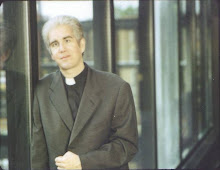These days I find myself spending considerable time thinking about some words from Mark’s Gospel. “As [Jesus] came out of the temple, one of his disciples said to him, ‘Look, Teacher, what large stones and what large buildings!’ Then Jesus asked him, ‘Do you see these great buildings? Not one stone will be left here upon another; all will be thrown down’” (Mark 13:1-2). Scholars tell us that this prediction concerns the destruction of the Temple in 70 CE, when Roman legions attacked its underlying supports in such a way that the entire structure collapsed and many of its stones were crushed. (1) What if Jesus was speaking of more than that temple? What if Jesus was speaking of all the structures of power, particularly religious power and institutions, that he came to transform?
In worship these days, many congregations love to sing “Canticle of the Turning.” (2) I wonder of they are really taking in the words:
“From the halls of pow’r to the fortress tow’r, not a stone will be left on stone.
Let the king beware, for your justice tears every tyrant from his throne.”
It sounds to me as if we are praising God for tearing down stones as God brings God’s gospel reign. Yet, it never seems to occur to us that the church may have stones that God intends to tear down. So I might add a line to the hymn.
We are fools to believe that God will leave our precious stones in tact.
The visible church the Spirit will lurch, when the gospel power we lack.
Thomas H. Troeger invites us to see the church as an edifice of thought and belief that is marked by an unmistakable incompleteness. (3) The church’s walls are still standing and its space remains defined, but there is a hole in the ceiling above the altar where a mosaic of the Almighty used to be. This “God shaped hole” serves as Troeger’s poetic expression of the church’s loss of commanding certitude about God. Preachers are challenged to bear witness to God with an imaginative power that vitalizes faith and ministry as Christians and congregations reconstruct their understanding of belief, worship, and ministry. (4) In order to do this, preachers must open themselves up to scripture as the “visions and voices of the cloud of witnesses (Hebrews 11:1-12:1) borne by the wind of the Spirit that will guide us ‘into all the truth’ (John 16:13).” (5) These witnesses remind us that ours is not the first age in which the church’s dome of meaning has collapsed; whenever this happened, the Spirit stirred God’s people to a more expansive understanding of God. That new image dominated the church’s dome of meaning until it also crumbled and the Sprit has blown yet again. Thus, for Troeger, the Bible canonizes a process of perpetually revising our theologies. Troeger cautions that we must expect inherited interpretation to be in tension with experience. This tension is rooted in God, who is not confined to the Bible and the past. Troeger writes, “We have a technical term for people who do not change: dead. If Christ has not changed since the resurrection, then Christ is no longer alive.” (6) This process of theological reconstruction brings sorrow because it means acknowledging the loss of things once held sacred. Following Troeger;’s metaphor, though the Spirit provides a new, more expansive image of God to replace the church’s cherished image of God that is crumbling, this new image of God, which brings the church’s resurrection, is terrifying before it is empowering because resurrection gives more freedom to Christ than most believers want their Savior to have. (7)
“Do you see these great buildings?” Jesus asks. “Not one stone will be left here upon another; all will be thrown down.” It occurs to me that this as much Jesus' pronouncement on our institutional church as it was the Jerusalem Temple. I fear spending my life propping up stones that are destined to fall! I am terrified by the new thing God is doing, the new life that God is bringing. And I am amazed when I see it!
Notes
(1) Dawn Ottoni Wilhelm, Preaching Mark: Proclaiming the Power of God (Louisville: Westminster John Knox, 2008), p. 221.
(2) Evangelical Lutheran Church in America, Evangelical Lutheran Worship (Minneapolis: Augsburg Fortress, 2006), #723.
(3) This summary of Troeger’s work is taken from Craig A. Satterlee, When God Speaks Through Change: Preaching in Times of Congregational Transition, (Herndon, VA: The Alban Institute, 2005), p. 17.
(4) Thomas H. Troeger, Preaching While the Church is Under Reconstruction: The Visionary Role of Preachers in a Fragmented World (Nashville: Abingdon Press, 1999), p. 15.
(5) Ibid., p. 19.
(6) Ibid., p. 100.
(7) Ibid., p. 105.
Sunday, February 8, 2009
Subscribe to:
Post Comments (Atom)

1 comment:
"I fear spending my life propping up stones that are destined to fall!"
I feel like you just dropped one of those big stones one me! I mean, in a good way...
You put words to something I feel almost every day, or at least every week. I carry a kind of heartsickness for the weight I lend to bringing some of stones down, terror that I'm pulling at the wrong ones, and guilt that I'm part of the untenable support structure.
So I try to preach the gospel and let the stones fall where they may. Actually, lately, I'm learning to love falling.
Post a Comment